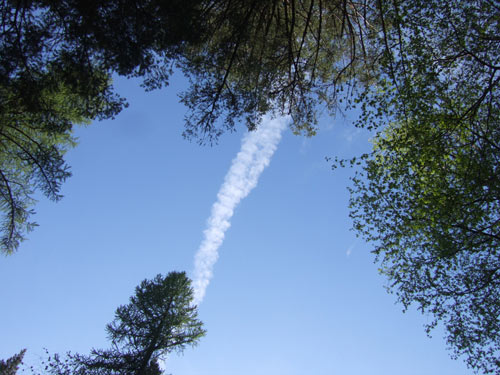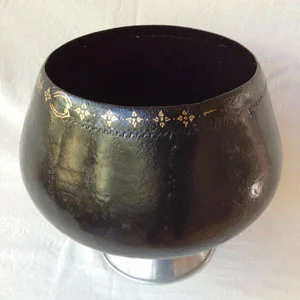Feeling stuck in a rut? Get out fast with this four-step practice.

Holistic Clearing Meditation
We all feel stuck sometimes. Even when we feel we’re aligned with the natural flow of the universe, natural flows include backeddies and still water. These processes serve useful functions, in a water body and in our lives. There are signs, though, that we’re not just still, we’re stuck. And then what? The Holistic Clearing practice invented by the Ven. Namgyal Rinpoche offers concise and effective means to get things moving again, with a renewed, fresher approach than we were using before.
What makes this practice different?
Holistic Clearing was specifically created as an “anti-paralytic practice.” There are many reasons that reasonable, talented and intelligent people get “paralyzed.” Anytime we are not responding spontaneously and with some sense of joy to the current situation, we could say there’s a kind of paralysis present. It may be from overwhelm, dread (“Oh no, not that subject again.”), bad habits, fear, laziness, or simply lack of experience.
Perhaps the most challenging kind of “paralysis” comes from our conditioned habitual patterns. We acquired many of our habits and beliefs in early childhood, so we notice these parts of ourselves about as much as fish notice water. However, these are the idiosyncrasies that our partners, colleagues and close friends occasionally tell us drive them round the bend. Can you call a few to mind, perhaps with a sense of humor?
Holistic Clearing helps us overcome these forms of paralysis, so that these incidents become less and less. With continued and dedicated practice, they eventually won’t arise at all. Imagine the relief you’ll feel! This kind of practice is an act of compassion to ourselves, and to others too: we’ll drive them less crazy.
Buddhist philosophy considers that there are two kinds of spiritual liberation, that is, liberation from being subject to suffering. One is liberation of the heart (ceto vimutti) and the other is liberation of the mind (panna vimutti). As individuals, we usually have a personal predominance; and both paths are powerful and necessarily for our full and integrated spiritual unfoldment. Practices like those that help us clear our womb experience – such as in Namgyal Rinpoche’s book and our teachings on Womb, Karma and Transcendence– pertain to ceto vimutti. Holistic Clearing focuses on panna vimutti.
How could Holistic Clearing help me?
We all know how transforming not-so-helpful habits into better ones is easier said than done! It can feel challenging even at the best of times.
Holistic Clearing is broken down into four simple reflective exercises. They can be undertaken to good effect individually, and when practiced as a group, help us to achieve greater insights into our thought and behavior patterns – and more to the point, how to transform them – in less time.
More specifically, Holistic Clearing helps us to focus the questions that we bring to our meditation practice, and to the questions that arise naturally during our practice. Insight comes from question, so by increasing the focus of the question, insights arise more quickly, “saving” us time. With tongue in cheek, we could call Holistic Clearing, “Insight for Busy People.”
While an established meditation practice is surely helpful for insight, every one of us, at some point, had never meditated before. And, thank heavens, insights still can arise without a formal sitting practice. Holistic Clearing may also be undertaken without a formal sitting practice, with good results. This would involve more of the other forms of traditional meditation: walking, standing and lying down. Though some postures are better suited for some practices, it’s worth noting that the Buddha instructed his students to practice mindfulness in all of these postures.
What difference would Holistic Clearing make in my life?
The different HC exercises consist of techniques to identify, reflect on, and transform our strengths, weaknesses or blocks and lacks, plus exercises to integrate all the above. Transforming our strengths helps us to be more balanced, without over-reliance on natural or developed talents or qualities. Do you know someone who can be too intelligent, or charming, too often? We can spread our energies around to strengthen our weaknesses, break through our blocks and grow our lacks. Living holistically this way makes for a much richer and joyful life.
Holistic Clearing is designed to help us achieve a profound inner and outer integration; the natural outcomes of this are greater freedom from habitual (unconscious) patterns, emotional conflicts and mental models that make our lives more stressful. From that flow greater love, self-love, joy and a greater feeling of spaciousness in our lives. When we get to enjoy these qualities, so does everyone around us. The positive ripple effects are better than we can imagine.
The exercises can be undertaken in solitary practice, and care needs to be taken so that they remain constructive. Though we could say that we’re looking at some “negative” qualities, this is fundamentally a positive undertaking.
A Holistic Clearing retreat provides us with the framework, guidance, and a respectable period of practice so that we can take it home with us and realistically continue, either our practice or our reflections, based on what we’ve learned. It’s meant to be sustainable and generative.
What would I learn from you two, as teachers?
Based in traditional insight practice, this modern adaptation for Westerners was invented by our teacher, the Ven. Namgyal Rinpoche. It’s important to us to share these highly effective practices of our remarkable teacher, so that more beings may benefit. To our knowledge we’re the only teachers making it available to others at this time. While there are no shortcuts in our development as human beings, we recognize that results can be perceived more quickly with some practices than others, and that these kinds of teachings are highly supportive to our modern lives.
Clear Sky Retreat Center in southeastern British Columbia is pleased to host a Holistic Clearing retreat July 4-11, 2015.
Photo credit: Cara Conroy-Low

